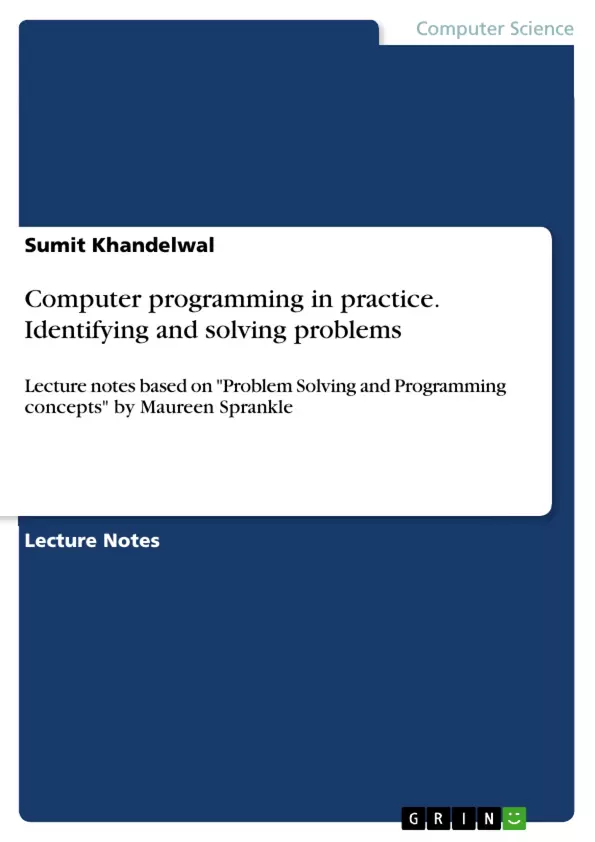This lecture notes consist of solution of Set of Computer Programming Concept. It shows how to identify and understand a problem. It also shows how to identify alternative ways to solve the problem and how to select the best solution.
The author explains all important terms and presents step-by-step-solutions as well as algorithmic solutions.
Inhaltsverzeichnis (Table of Contents)
- Chapter 1
- Step 1: Identifying the problem:
- Step 2: Understanding the problem:
- Step 3: Identifying alternative solutions:
- Step 4: Selecting the best solution:
- Step 5 Listing a set of numbered step-by-step instructions to attain a given solutions:
- Six steps of problem solving
- Explanation to each step:
- Identify the problem:
- Understand the problem:
- Identify the alternative ways to solve a problem:
- Select the best way to solve the problem from the list of alternative solutions:
- List instructions that enable you to solve the problem using the selected solution.
- Evaluate the solution:
Zielsetzung und Themenschwerpunkte (Objectives and Key Themes)
This chapter introduces the fundamental concepts of problem solving and programming, using simple everyday examples to illustrate the six steps involved in solving a problem. The chapter aims to provide a framework for understanding the problem-solving process, which can be applied to various challenges in computer programming.
- The six steps of problem solving
- Identifying and understanding the problem
- Generating and evaluating alternative solutions
- Developing step-by-step instructions
- The importance of knowledge base in problem solving
Zusammenfassung der Kapitel (Chapter Summaries)
Chapter 1 begins by presenting a practical example of reaching the workplace on time. The text then outlines the six steps of problem solving, which include identifying the problem, understanding it, exploring alternative solutions, selecting the best solution, listing instructions, and evaluating the solution. Each step is thoroughly explained with relevant examples, emphasizing the significance of a knowledge base in problem-solving. The chapter concludes by illustrating the application of these steps in various scenarios, such as making a cup of cocoa, sharpening a pencil, and starting a car.
Schlüsselwörter (Keywords)
The chapter focuses on the six steps of problem solving, knowledge base, alternative solutions, and applying the problem-solving framework to everyday tasks. It lays the foundation for understanding how these concepts translate to the world of computer programming.
- Citation du texte
- Sumit Khandelwal (Auteur), 2019, Computer programming in practice. Identifying and solving problems, Munich, GRIN Verlag, https://www.grin.com/document/468636



